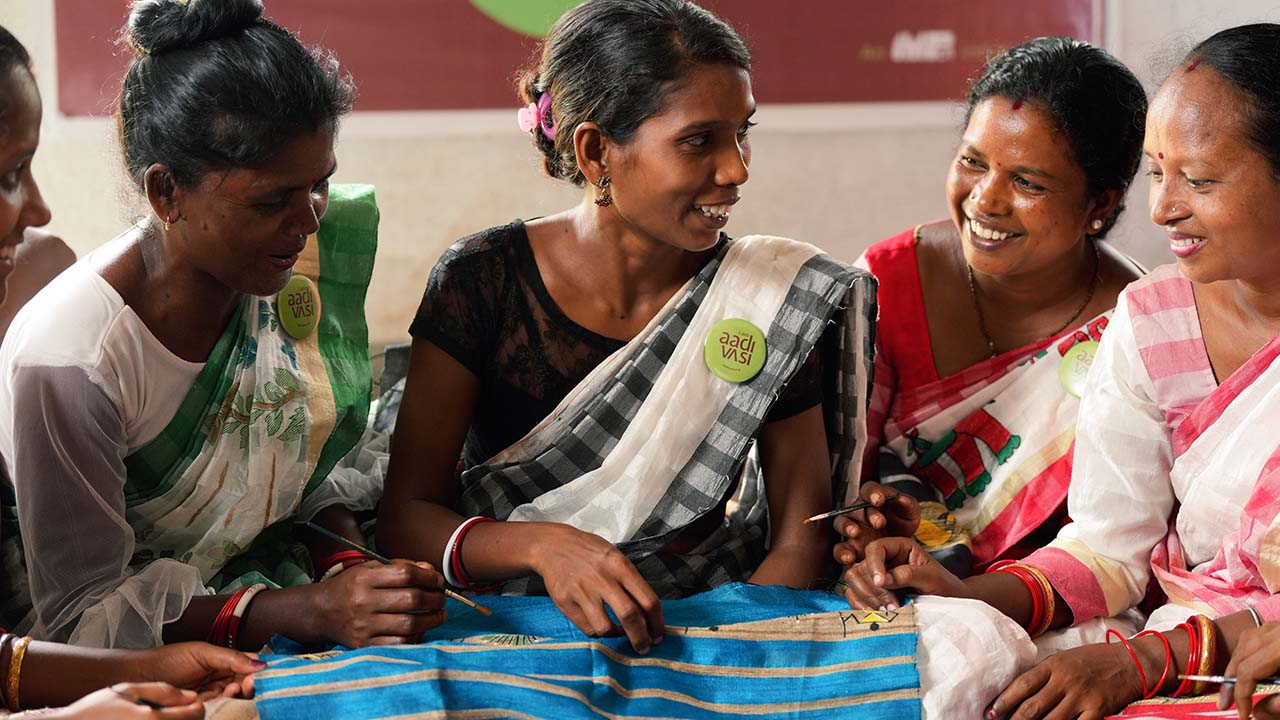Treasure the Tradition: Support Indigenous Crafts of India, Give Back To The Community

In the heart of India, amidst verdant forests and echoing mountains, reside indigenous communities with a rich cultural heritage. These tribes have for centuries practiced and preserved ancient crafts that tell stories of their land and traditions. Indigenous handicrafts are not just beautiful objects; they are vibrant expressions of a culture passed down through generations, reflecting a deep respect for nature and a unique artistic vision.
The Rich Tapestry of Indigenous Craftsmanship
India's indigenous people encompass over 700 tribes, each with its own distinct artistic heritage. From Warli paintings of Maharashtra depicting hunting scenes and daily life to the intricate metalwork of the Dhokra tribe in Odisha, the variety of indigenous handicrafts is astounding.
Woven textiles are a common thread across many Indigenous communities. The tribal women of Gujarat weave colorful patola sarees using techniques honed over centuries. In West Bengal, the Santals craft exquisite sarees with geometric patterns and rich symbolism. Natural materials like cotton, wool, and silk form the base for these textiles, often dyed using vegetable dyes.
Beyond textiles, indigenous artistry extends to pottery, jewelry, woodwork, and metalwork. Black pottery crafted by the potters of Manipur is known for its unique luster and symbolic motifs. The Dongria Kondh tribe of Odisha creates breathtaking appliqué work on fabric using colorful cloth pieces.
The creation of these handicrafts is not just a livelihood; it's a way of life. Traditional techniques are meticulously followed, with knowledge passed down from generation to generation. The use of natural materials and sustainable practices is another hallmark of indigenous crafts.
Beyond Aesthetics: The Value of Indigenous Crafts
Indigenous handicrafts are more than just beautiful objects to adorn your home. Each piece is imbued with deeper meaning, reflecting the stories, rituals, and traditions of the people who create them. Warli paintings, for instance, depict scenes from their daily lives and mythology. The vibrant colors and geometric patterns of textiles often hold symbolic significance, representing nature, deities, or community values.
Owning an indigenous handicraft is not just about acquiring a decorative item; it's about connecting with a rich cultural heritage. By supporting these crafts, you are helping to preserve a unique artistic tradition that might otherwise be lost.
Indigenous Crafts: An Ethical Choice That Gives Back
In today's world, where mass production and environmental concerns are at the forefront, indigenous handicrafts offer a sustainable and ethical alternative. Made from natural materials and crafted using traditional techniques, these products have minimal impact on the environment.
The fair trade movement plays a vital role in empowering these artisans. Fair trade organizations ensure that artisans receive fair compensation for their work, allowing them to maintain their traditional way of life and support their families. When you purchase an indigenous handicraft through a fair trade organization, you can be confident that your purchase is making a positive impact that extends beyond the artisans themselves.
Many fair trade organizations directly support initiatives that address causes close to your heart, including:
● Education: A portion of your purchase might go towards funding educational programs in tribal communities, giving children access to quality education and a brighter future.
● Sanitary Pads: Some organizations work to provide sanitary napkins to girls and women in these communities, promoting menstrual hygiene and empowering them to stay healthy and manage their periods with dignity.
● Mid-Day Meals: Fair trade models can contribute to programs that provide nutritious mid-day meals to school children, ensuring they have the energy and focus to learn and thrive.
● Environmental initiatives: By supporting sustainable handicrafts, you're also indirectly giving back to the environment, as these crafts are made with natural materials and traditional practices that minimize environmental impact.
Incorporating Indigenous Crafts into Your Life
The beauty and versatility of indigenous handicrafts make them perfect for incorporating into your home decor. A handwoven rug with geometric patterns can add a touch of cultural richness to your living room. A Warli painting can be a stunning conversation starter, while intricately carved wooden sculptures can add an earthy touch to your shelves.
These handicrafts are not just for your own home; they can also be thoughtful and unique gifts. Imagine gifting a friend a handwoven stole made by a tribal woman in Kutch or a set of terracotta lamps crafted by a potter in Madhya Pradesh. Such gifts carry not just aesthetic value but also the story of the artisan who created them and the positive impact your purchase creates.
Several online marketplaces and stores specialize in authentic indigenous handicrafts. A little research can help you find reputable sellers who work directly with artisans and support fair trade practices.
Conclusion: Be a Part of the Legacy, Make a Difference
Supporting indigenous handicrafts is not just about acquiring beautiful objects; it's about consciously choosing to contribute to the preservation of a cultural legacy. Every purchase empowers artisans, keeps their traditions alive, and ensures that these exquisite crafts continue to grace our lives for generations to come. The next time you're looking for a unique and meaningful piece for your home or a gift for someone special, consider the beauty and artistry of indigenous handicrafts. By making this choice, you become part of the story, supporting these communities, treasuring their traditions, and making a positive impact on the world.

